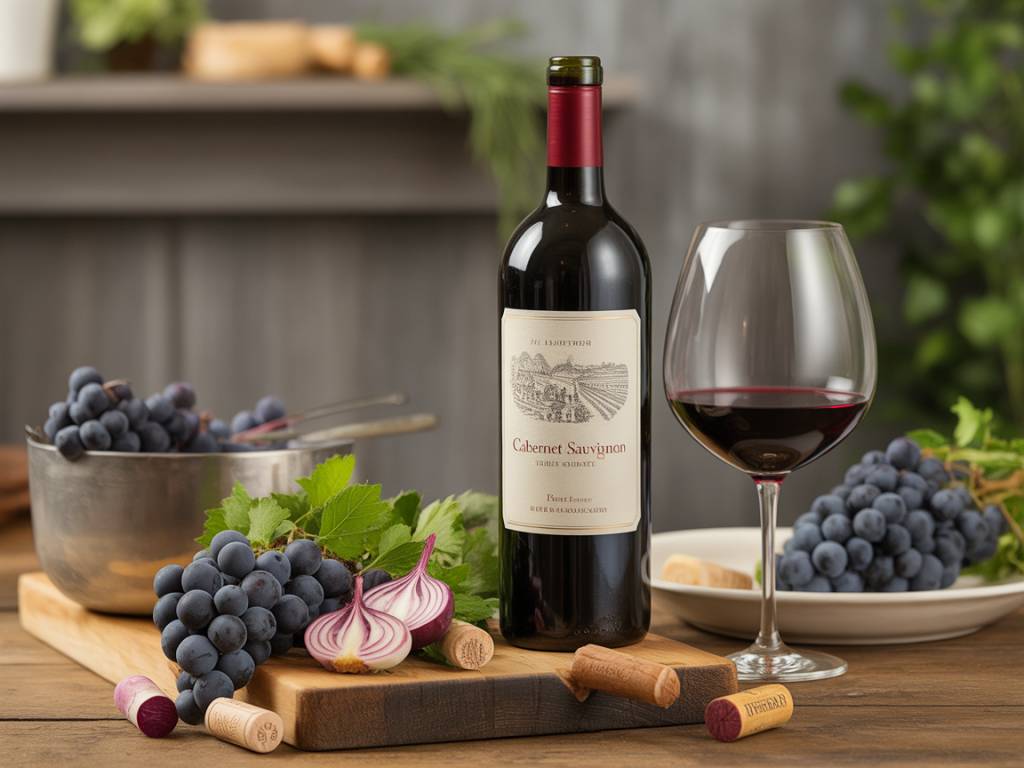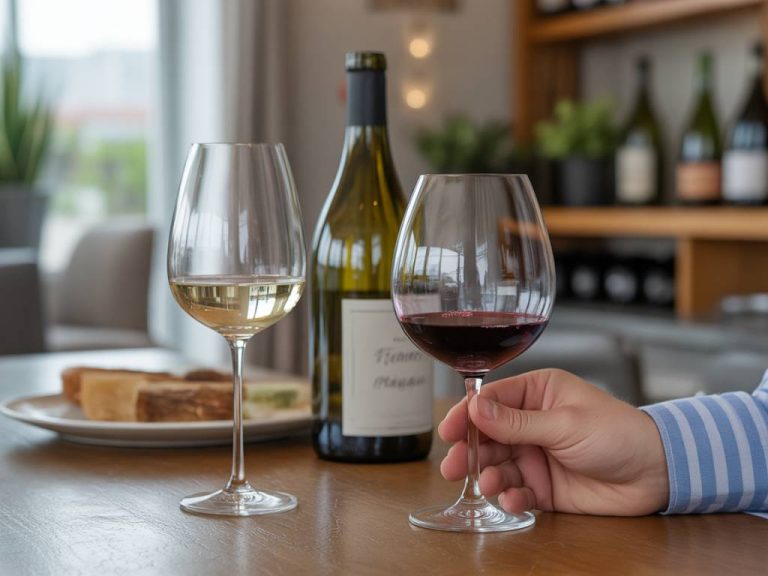
Cabernet sauvignon cooking ideas and wine-infused recipes
Why Cabernet Sauvignon Deserves a Spot in Your Kitchen
If you’ve ever poured a silky glass of Cabernet Sauvignon and thought, “I wish I could cook with this,” you’re not alone. Known for its bold structure, rich tannins, and deep fruit profile, Cabernet is more than a dinner companion—it’s an ingredient in its own right. When used thoughtfully, it can bring layers of flavor to a dish in ways few other wines can.
But there’s a caveat: not all wines are created equal in the kitchen. And not every dish pairs well with Cabernet’s intensity. So today, we’ll unpack the why, the how, and the when of cooking with Cabernet Sauvignon, offering real-life ideas and techniques that highlight this wine’s impressive culinary range.
Understanding Cabernet in Cooking
Cabernet Sauvignon brings forward a powerful duo: acidity and tannins. These characteristics allow it to deglaze pans, reduce into sauces, and infuse meats without getting lost in the process. Its blackberry, cassis, and sometimes bell pepper notes deliver a complexity that water or broth simply can’t replicate.
But because of this structure, it’s not suitable for every dish. You don’t want to splash it into a light seafood risotto, unless you’re aiming for confusion (and a greyish rice). Instead, Cabernet excels in dishes that are rich, meaty, and capable of balancing its depth.
Cabernet-Friendly Recipes to Try at Home
Here are several kitchen-tested ideas where Cabernet isn’t just an optional ingredient—it’s the backbone of the flavor. I’ve tried and refined each one either at home or in collaboration with small production wineries across California and Washington.
Cabernet-Braised Short Ribs
This classic hits all the right notes. The wine’s tannins soften over a long braise, while its fruit integrates with beef stock, garlic, and aromatic vegetables.
- Tip: Use chuck ribs and sear them thoroughly before braising—color equals flavor. Deglaze the pan with half a bottle of Cabernet, and reduce it by half before moving to a Dutch oven.
- Ideal pairing: A young Napa Cab with firm tannins. The dish tames the wine, not the other way around.
Wild Mushroom and Cabernet Reduction Sauce
Perfect over grilled steak or a roasted portobello, this reduction takes on earthy complexity when you cook down onion, shiitake, and cremini mushrooms with a bold Cab.
- Technique: Sweat shallots and mushrooms, add a splash of balsamic for acid balance, then pour in ¾ cup of Cabernet and reduce until nappe (a sauce consistency that coats the back of a spoon).
- Pro tip: Strain for elegance, or leave it chunky for rustic charm.
Cabernet-Stewed Lentils with Smoked Sausage
Lentils may not scream “fine dining,” but paired with smoked sausage and moistened with good wine, they sing the song of weekday comfort food with a gourmet twist.
- Start by browning sausage in olive oil. Set aside. In the same pot, sweat onion, garlic, and carrot. Stir in the green lentils, pour in a hearty cup of Cabernet and equal part broth, and simmer until tender.
- This dish gets even better the next day—Cabernet brings longevity in flavor.
Sweet Meets Structured: Cabernet in Desserts
Yes, really. While not the first wine you think of when planning dessert, Cabernet can add depth to sweets when paired properly.
Cabernet-Poached Pears
This one is a classic for a reason. The natural acidity and berry notes in Cabernet beautifully complement the soft sweetness of ripe pears.
- Peel and core firm pears. Simmer them in reduced Cabernet with a cinnamon stick, orange zest, and optional touch of honey or maple syrup. The wine should be reduced to about a third of its volume to intensify flavor.
- Serve with vanilla ice cream or mascarpone whipped cream.
Dark Chocolate Cabernet Truffles
Cabernet and cocoa share a flavor ancestry—both are bitter, intense, luxurious. In truffle form, they become an elegant bite of decadence.
- Warm heavy cream and pour it over finely chopped 70% dark chocolate. Stir in 2 tablespoons of Cabernet and a pinch of sea salt. Chill, roll in cocoa powder, and keep in the fridge until ready to serve.
- They also make a sophisticated (and dangerously addictive) gift.
Dishes You Should Avoid with Cabernet
Not every recipe benefits from Cabernet’s bold personality. Knowing where it shines means understanding where it clashes.
- Delicate fish: Unless it’s a blackened ahi tuna steak with spice to spare, most seafood peaks with white wines or lighter reds.
- Fresh herbs and citrus-heavy dishes: Extensive acidity or herbal brightness can fight with Cabernet’s structure. Try a Pinot Noir or Sauvignon Blanc instead.
- Creamy dairy-rich dishes: Think mac and cheese or Alfredo sauce—Cabernet’s tannins can overpower or curdle cream-based recipes.
Cooking Tips When Using Cabernet
To get the best out of Cabernet in your recipes, refine your technique like you would with seasoning. Here are a few practical guidelines I use in professional tastings and private cooking demos:
- Don’t use wine you wouldn’t drink. No need to sacrifice a $60 bottle, but if a wine is flawed or oxidized, your food will taste it. Mid-range, young Cabernets with bright fruit and firm acidity are best.
- Let it cook off. If you’re reducing, cook long enough to burn off the raw alcohol but not so much that you lose the wine’s nuance. This usually means simmering uncovered for 10–15 minutes depending on volume.
- Use it early in the cooking process. Adding Cabernet at the finish line? It’s like putting socks on after shoes—doesn’t work. Let the wine integrate by adding it during sautéing, deglazing, or reduction stages.
Pairing the Cooked Dish with the Right Glass
You’ve cooked with Cabernet. Now what should you drink with it? While it might seem intuitive to pair the same wine you used in cooking, it’s not always ideal. The key is to match intensity, acidity, and weight.
- For braised meats or hearty stews: A Cabernet-dominant Bordeaux blend or aged Napa Valley Cab with softened tannins rounds out the richness.
- For meals with subtle Cabernet reductions or lighter proteins: A Cabernet Franc or Merlot can echo Cabernet’s role without overpowering the plate.
- For desserts: A late-harvest Cabernet or Port-style red can mirror the richness of chocolate or berries without drying the palate.
Remember, the wine in the glass should never compete with the flavors on the plate—it should tag team them.
Final Thoughts on Bringing Wine Into the Pan
Cabernet Sauvignon has long been a star on the table—but its role in the kitchen is often overlooked. When integrated with intention, it elevates humble ingredients and adds sophistication to weeknight meals. Whether you’re simmering lentils for the family or braising short ribs for a special dinner, there’s a place for Cabernet at every stage of the meal—glass in hand, pan on flame.
Curious to try it yourself? Start small. Make a reduction. Bake a dessert. Pair with intention. After all, some of the best wines I’ve ever tasted weren’t just poured—they were plated.



